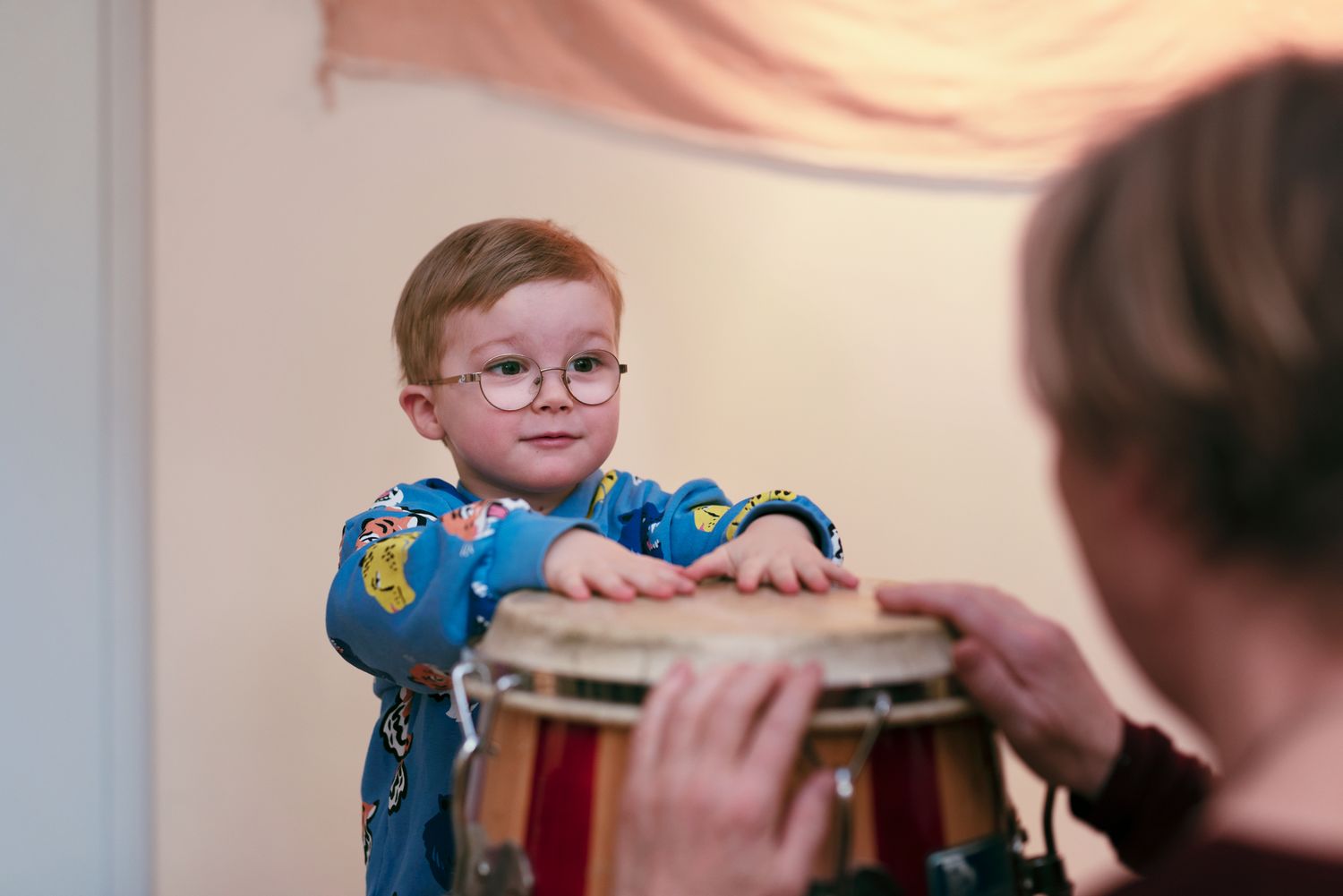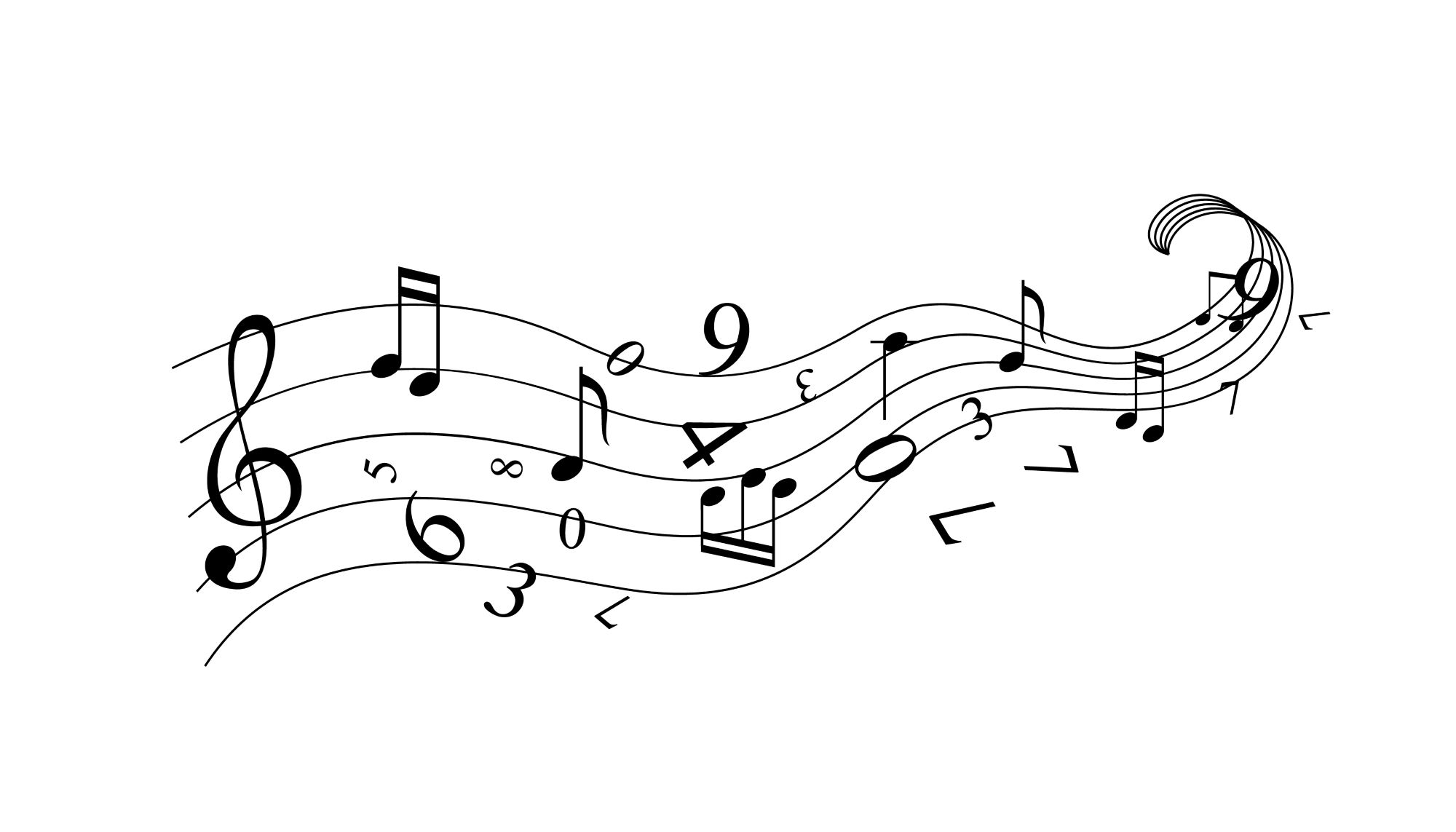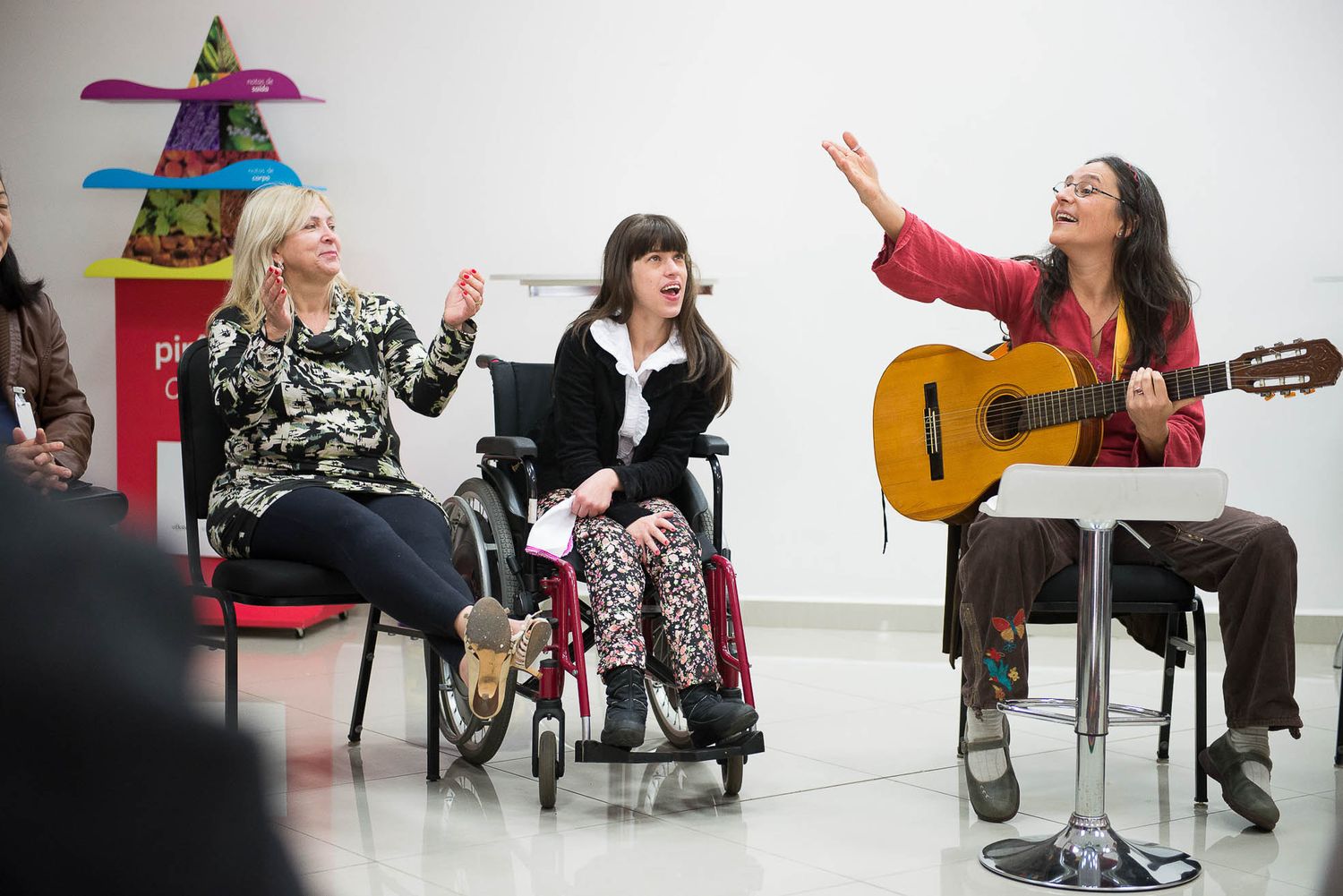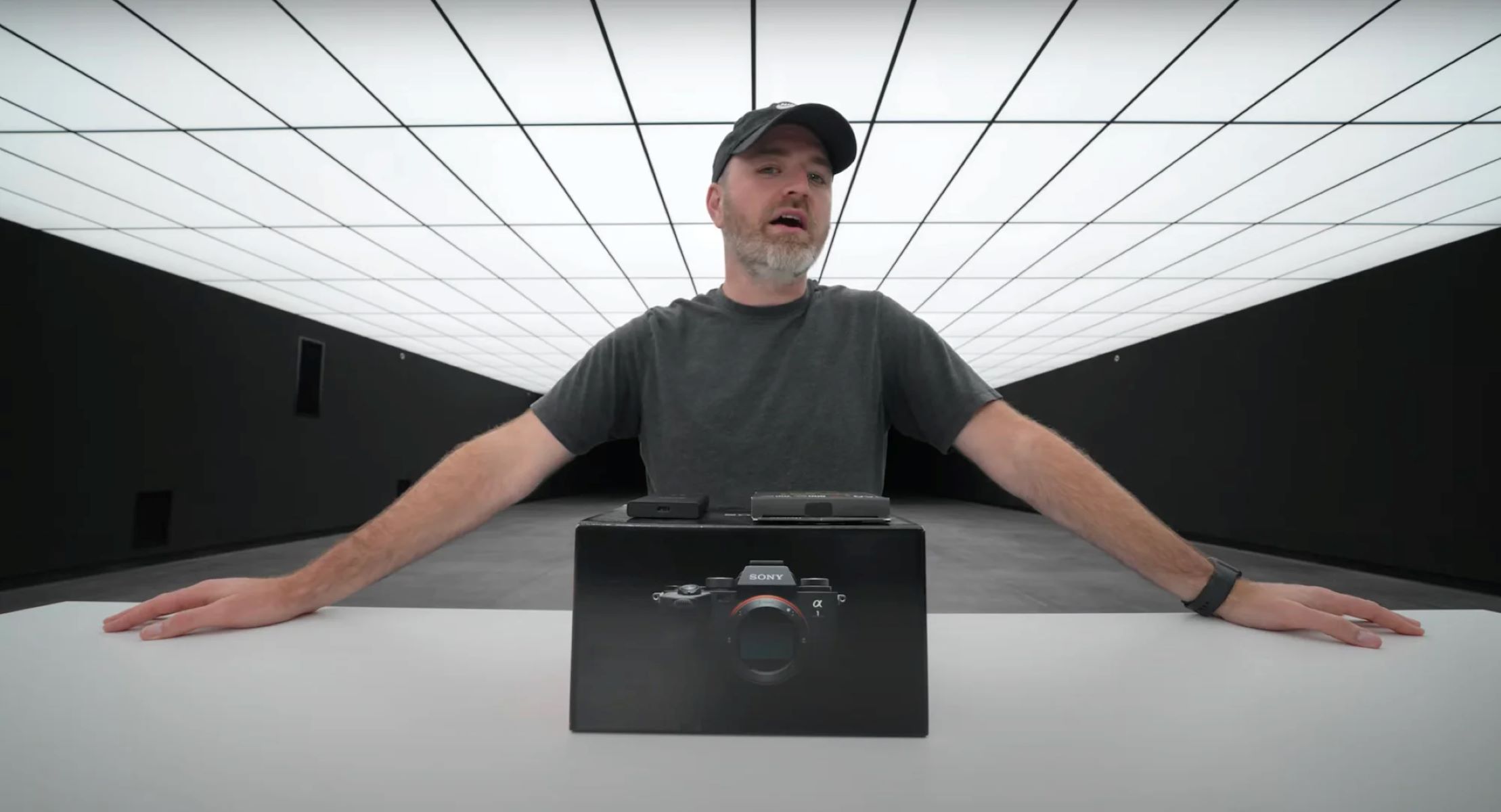Home>Events & Info>Music Therapy>What Does Art And Music Therapy Help With


Music Therapy
What Does Art And Music Therapy Help With
Modified: February 2, 2024
Discover the power of music therapy and its impact on emotional well-being, stress reduction, and cognitive development. Explore the benefits of art and music therapy for individuals of all ages and backgrounds.
(Many of the links in this article redirect to a specific reviewed product. Your purchase of these products through affiliate links helps to generate commission for AudioLover.com, at no extra cost. Learn more)
Table of Contents
Introduction
Art and music therapy are innovative forms of therapy that harness the power of artistic expression and music to improve mental, emotional, and physical well-being. These therapeutic approaches have gained recognition and popularity in recent years, offering alternative methods for individuals seeking healing and personal growth.
Art therapy involves the use of various art forms, such as painting, drawing, sculpting, and collage, as a means of communication and self-expression. Music therapy, on the other hand, utilizes musical elements like rhythm, melody, and lyrics to promote relaxation, emotional release, and cognitive development.
Both art and music therapy offer unique benefits and can be utilized in various clinical and non-clinical settings. These therapeutic modalities don’t require any artistic or musical skills; instead, they focus on the process and the therapeutic benefits of engaging with art and music.
Throughout this article, we will explore the key concepts and benefits of art and music therapy, highlighting the conditions they can help with and their similarities and differences. Whether you are curious about these therapeutic approaches or considering incorporating them into your own self-care routine, this article will provide you with the insights you need.
What is Art Therapy?
Art therapy is a form of psychotherapy that utilizes artistic expression and creativity as a means of facilitating healing and personal growth. It is based on the belief that the process of creating art can be therapeutic, allowing individuals to explore their thoughts, emotions, and experiences in a non-verbal and non-threatening way.
Art therapists, who are trained mental health professionals, guide individuals through the art-making process and provide support and insight into the artwork. The focus is not on the aesthetic quality of the artwork but on the personal meaning and symbolism behind it.
In art therapy sessions, individuals are encouraged to engage in various art forms, such as painting, drawing, sculpture, collage, and even digital art. The choice of art medium is based on the individual’s preferences and therapeutic goals. The creative process itself becomes a tool for self-expression, self-discovery, and self-reflection.
Art therapy can be used with clients of all ages, from children to older adults, and can be beneficial for individuals experiencing a wide range of challenges, including trauma, grief, depression, anxiety, stress, and relationship issues. It is also effective in enhancing self-esteem, improving communication skills, and promoting personal growth and self-awareness.
One of the key aspects of art therapy is the use of symbolism. Artworks often contain symbols, colors, and imagery that represent the inner thoughts and emotions of the individual. Through the interpretation of these symbols, art therapists can provide insights and facilitate meaningful discussions, helping individuals gain a deeper understanding of their experiences and promoting healing.
Art therapy can be conducted in individual or group settings, depending on the therapeutic goals and the needs of the individual. In group art therapy, individuals have the opportunity to share their artwork and experiences with others, fostering a sense of community and connection.
It is important to note that art therapy should be facilitated by a qualified art therapist who has undergone specialized training and is licensed or certified in art therapy. This ensures that the therapy sessions are conducted in a safe and ethical manner, with a focus on the individual’s well-being.
How Does Art Therapy Help?
Art therapy offers a range of benefits that can positively impact an individual’s mental, emotional, and physical well-being. Here are some ways in which art therapy can help:
- Self-expression and communication: Art therapy provides individuals with a non-verbal form of communication. It allows them to express their thoughts, emotions, and experiences that may be difficult to put into words. Through the artwork, individuals can communicate their inner world, experiences, and issues they may be facing.
- Emotional release: Engaging in art-making can serve as a means of catharsis and emotional release. It offers a safe space for individuals to express and process intense emotions, such as anger, grief, sadness, or anxiety. Art therapy helps individuals release pent-up emotions and gain a sense of relief and emotional well-being.
- Self-discovery and insight: Creating art allows individuals to explore their inner thoughts, feelings, and beliefs. Art therapy facilitates self-reflection and introspection, helping individuals gain a deeper understanding of themselves and their experiences. Through the art-making process, individuals may uncover hidden emotions, trigger memories, and gain insights that can lead to personal growth and self-awareness.
- Stress reduction and relaxation: Engaging in art-making can be a calming and soothing activity. The process of focusing on the artwork and the tactile sensations of creating can help reduce stress and promote relaxation. Art therapy encourages individuals to be in the present moment and provides a respite from daily worries and anxieties.
- Improved self-esteem and self-confidence: Creating art and receiving positive feedback from an art therapist can boost self-esteem and self-confidence. The act of creating something meaningful and receiving validation for it can help individuals develop a sense of accomplishment and self-worth.
- Cognitive development and problem-solving skills: Art therapy can improve cognitive skills, such as attention, concentration, and problem-solving abilities. Engaging in art-making requires planning, decision-making, and problem-solving, which can enhance cognitive functioning and promote brain health.
It is important to note that art therapy is not a substitute for traditional therapy or medication. It is often used as a complementary approach alongside other forms of treatment. Art therapy can be particularly beneficial when integrated into a comprehensive treatment plan, tailored to the individual’s unique needs and goals.
What is Music Therapy?
Music therapy is a professional healthcare practice that uses music to address physical, emotional, cognitive, and social needs of individuals of all ages. It is based on the understanding that music has a unique ability to affect our emotions, stimulate our senses, and engage our brains in a profound way.
Music therapists, who are trained professionals with specialized knowledge in music and therapy, utilize various musical elements such as rhythm, melody, harmony, and lyrics to create therapeutic interventions. These interventions are tailored to the individual’s goals and needs, and can include activities like singing, playing instruments, composing music, and listening to music.
The goal of music therapy is to support and promote the well-being of individuals by addressing specific treatment objectives. Music therapists work closely with individuals to assess their current abilities, preferences, and therapeutic goals, and then design interventions that utilize music to achieve those goals.
Music therapy can be utilized in a wide range of settings, including hospitals, rehabilitation centers, schools, mental health facilities, and senior care centers. It can be administered in both individual and group settings, depending on the needs and goals of the individual.
One of the key principles of music therapy is the belief in the inherent therapeutic qualities of music itself. Music has the ability to evoke emotions, stimulate memories, and tap into deep-seated feelings. It can provide a means of self-expression, help individuals relax, and promote a sense of connection and belonging.
Music therapy can be beneficial for individuals with various conditions, such as autism spectrum disorder, developmental disabilities, mental health disorders, neurological disorders, chronic pain, and dementia. It can also be used in palliative care to provide comfort and support to individuals at the end of life.
It is important to note that music therapy should be conducted by a certified music therapist who has undergone specialized training and adheres to ethical guidelines. This ensures that the therapy sessions are safe, effective, and tailored to the individual’s needs. The therapist may collaborate with other healthcare professionals to provide a holistic and integrated approach to treatment.
How Does Music Therapy Help?
Music therapy offers a range of benefits that can positively impact an individual’s physical, emotional, cognitive, and social well-being. Here are some ways in which music therapy can help:
- Emotional expression and regulation: Music has the power to evoke emotions, and music therapy provides a safe space for individuals to express and explore their emotions. It can help individuals process and regulate their emotions, providing an outlet for emotional release and promoting emotional well-being.
- Pain management and relaxation: Research has shown that music therapy can reduce pain perception and promote relaxation. Listening to calming music, engaging in rhythmic activities, and utilizing music-assisted relaxation techniques can alleviate physical discomfort and promote a sense of well-being.
- Cognitive stimulation and memory enhancement: Music therapy can stimulate cognitive function, improve attention, and enhance memory recall. Engaging in musical activities that involve rhythm, melody, and lyrics can activate different areas of the brain and promote cognitive processing.
- Physical rehabilitation and motor skills development: Music therapy can be beneficial for individuals undergoing physical rehabilitation. The rhythmic and repetitive nature of music can be used to improve motor skills, coordination, and movement. Playing instruments, engaging in music-based exercises, and utilizing rhythmic patterns can aid in physical recovery and rehabilitation.
- Social interaction and communication: Music has a unique ability to facilitate social interaction and promote communication. Music therapy provides opportunities for individuals to engage in group music-making, sing together, and participate in musical activities that enhance social skills and foster a sense of connection and belonging.
- Stress reduction and mood enhancement: Music therapy can reduce stress, anxiety, and depression. Listening to uplifting or soothing music, engaging in musical improvisation, and participating in music-based activities can promote relaxation, elevate mood, and improve overall mental well-being.
Music therapy is a versatile and adaptable form of therapy that can be tailored to meet the needs and preferences of individuals. It can be used as a standalone therapy or integrated into a comprehensive treatment plan alongside other therapeutic approaches.
It is important to work with a certified music therapist who can assess individual needs, develop personalized interventions, and provide guidance and support throughout the therapy process. Music therapists have a deep understanding of how music can be utilized therapeutically and can create a safe and supportive environment for individuals to explore their musical potential and achieve their therapeutic goals.
Similarities between Art and Music Therapy
While art therapy and music therapy are distinct forms of therapy, they share several similarities in their approaches and therapeutic benefits:
- Non-verbal expression: Both art therapy and music therapy provide individuals with non-verbal forms of expression. They offer alternative avenues for individuals to communicate their thoughts, emotions, and experiences that may be difficult to express verbally.
- Creative self-expression: Both modalities encourage creative self-expression as a means of exploring and processing emotions, experiences, and inner thoughts. Art therapy utilizes visual art forms, while music therapy utilizes musical elements to facilitate self-expression.
- Emotional release: Both art therapy and music therapy offer opportunities for emotional release. Engaging in artistic or musical activities can provide a cathartic outlet for individuals to release and process intense emotions, leading to emotional well-being.
- Therapeutic relationship: Both art therapists and music therapists establish a therapeutic relationship with their clients. They provide a safe and supportive environment, fostering trust and rapport to facilitate the therapeutic process.
- Symbolic interpretation: Both art therapy and music therapy involve the interpretation of symbols and imagery. Art therapists and music therapists help individuals explore the deeper meanings behind their creations, facilitating insight and self-discovery.
- Holistic approach: Both modalities recognize the interconnectedness of mind, body, and spirit. They take a holistic approach to therapy, considering the individual’s physical, emotional, and spiritual well-being in the therapeutic process.
- Personal growth and self-awareness: Both art therapy and music therapy aim to promote personal growth and self-awareness. They provide opportunities for individuals to gain insights about themselves, enhance self-esteem, and develop coping skills.
While art therapy and music therapy have similarities, it is important to note that they are also distinctive in their practice and techniques. Each modality has its own unique therapeutic benefits and can be more suitable for specific individuals or conditions.
Ultimately, the choice between art therapy and music therapy depends on the individual’s preferences, therapeutic goals, and the expertise of the therapist. Both modalities can complement each other and be integrated into a comprehensive treatment plan, offering a multi-modal approach to healing and personal growth.
Differences between Art and Music Therapy
While art therapy and music therapy share similarities, there are also notable differences between the two modalities:
- Medium of expression: The most obvious difference is the medium of expression used in each modality. Art therapy utilizes visual art forms such as painting, drawing, and sculpture, while music therapy utilizes musical elements like rhythm, melody, and lyrics.
- Sensory stimulation: Art therapy primarily engages the visual and tactile senses, as individuals interact with physical art materials and textures. In contrast, music therapy engages the auditory and sometimes kinesthetic senses, as individuals listen to music or participate in musical activities.
- Communication style: Art therapy tends to be more introspective and individual-centered, focusing on the individual’s personal exploration and expression. Music therapy, on the other hand, often involves more interactive and social elements, as individuals may engage in group music-making or participate in guided musical experiences.
- Methods of assessment: Art therapy often relies on analyzing and interpreting visual artworks created by individuals as a means of gaining insight into their thoughts and emotions. In music therapy, assessments may involve observing an individual’s musical abilities, preferences, and responses to different types of music.
- Approach to therapy: Art therapy typically emphasizes the process of creating art rather than the final product. The focus is on the individual’s personal meaning and exploration. Music therapy, while also valuing the process, may incorporate elements of music performance, improvisation, or composition to achieve therapeutic goals.
- Training and certification: Both art therapy and music therapy require specialized training, but they follow different pathways to certification. Art therapists typically hold a master’s degree in art therapy, whereas music therapists often have a bachelor’s or master’s degree in music therapy and must complete a clinical internship and pass a certification exam.
- Populations served: While both modalities can be used with a wide range of populations, art therapy is often utilized with individuals who are comfortable with artistic expression and prefer visual modes of communication. Music therapy, on the other hand, may be preferred for individuals who have a strong emotional connection to music or respond well to auditory stimuli.
It is important to consider these differences and consult with a qualified professional to determine which therapy modality is most suitable for an individual’s needs and goals. In certain cases, a combination of art therapy and music therapy may be integrated into a comprehensive treatment approach to address a broader range of therapeutic needs.
Conditions that Art and Music Therapy Help With
Both art therapy and music therapy have been found to be effective in supporting individuals with a wide range of conditions and challenges. While the specific therapeutic goals may vary depending on the individual, here are some of the conditions that art therapy and music therapy can help with:
- Depression and anxiety: Art therapy and music therapy can provide a creative outlet for individuals experiencing symptoms of depression or anxiety. Engaging in artistic or musical activities can promote relaxation, self-expression, and emotional release, helping individuals cope with their symptoms.
- Trauma and post-traumatic stress disorder (PTSD): Both modalities have shown promising results in helping individuals process trauma and manage symptoms of PTSD. Art therapy and music therapy provide alternative methods of expression and can facilitate healing and recovery.
- Substance abuse and addiction: Art therapy and music therapy have been used in addiction recovery programs to support individuals in their journey towards sobriety. These therapeutic approaches offer a means of self-expression, emotional regulation, and finding new coping strategies.
- Autism spectrum disorder (ASD): Art therapy and music therapy have been found to be particularly helpful for individuals on the autism spectrum. The non-verbal and sensory nature of these modalities can support communication, self-expression, social interaction, and emotional regulation for individuals with ASD.
- Developmental disabilities: Both art therapy and music therapy can be beneficial for individuals with developmental disabilities, such as intellectual disabilities or cognitive impairments. These modalities provide opportunities for creative self-expression, social interaction, and skill development.
- Chronic pain and illness: Art therapy and music therapy can help individuals manage and cope with chronic pain and illness. Engaging in these creative activities can distract from pain, reduce stress, and promote overall well-being.
- Seniors and dementia: Art therapy and music therapy can enhance the quality of life for seniors, particularly those with dementia. These modalities can stimulate memories, foster social interaction, and provide a sense of joy and connection for older adults.
It is important to note that art therapy and music therapy are versatile approaches that can be adapted to meet the specific needs and goals of individuals with various conditions. They may be used in conjunction with other traditional therapies and treatments to provide a holistic and comprehensive approach to care.
Ultimately, the effectiveness of art therapy and music therapy may vary from person to person. It is recommended to work with a qualified art therapist or music therapist who can assess individual needs and tailor the therapy to best support the individual’s specific condition and goals.
Benefits of Art and Music Therapy
Art therapy and music therapy offer a range of benefits that can positively impact an individual’s well-being and overall quality of life. Here are some key benefits of engaging in these therapeutic modalities:
- Emotional expression and release: Both art therapy and music therapy provide outlets for emotional expression. They offer individuals a safe and non-judgmental space to express and process emotions, leading to emotional release and an increased sense of well-being.
- Stress reduction and relaxation: Engaging in art therapy or music therapy can promote relaxation and reduce stress. The creative process, whether through visual art or music, allows individuals to focus their attention, helping to calm the mind and body.
- Improved self-esteem and self-confidence: Creating art or engaging in music-making can boost self-esteem and self-confidence. Accomplishing a creative task, receiving validation from a therapist, or sharing artwork or music with others can enhance feelings of self-worth and competence.
- Enhanced self-awareness and personal growth: Both modalities foster self-awareness and personal growth. Through the process of creating art or engaging with music, individuals can gain insights into their thoughts, feelings, and experiences, leading to a deeper understanding of themselves and their personal journey.
- Improved communication and social skills: Art therapy and music therapy can enhance communication and social skills. Participating in creative activities, whether individually or in a group, promotes social interaction, cooperation, and communication, helping individuals build and strengthen relationships.
- Cognitive stimulation and development: Engaging in art or music activates different areas of the brain, leading to cognitive stimulation and development. These therapies can enhance attention, memory, problem-solving skills, and overall cognitive functioning.
- Pain management and physical rehabilitation: Both art therapy and music therapy can be effective in managing pain and supporting physical rehabilitation. They provide opportunities for distraction from pain, promote relaxation, and improve physical coordination and fine motor skills.
- Alternative means of expression: Art therapy and music therapy offer alternative forms of expression for individuals who may struggle with verbal communication. Individuals can communicate their thoughts, emotions, and experiences through art or music, bypassing language barriers and accessing deeper levels of expression.
It is important to note that the benefits of art therapy and music therapy can be varied and individualized. Each person’s experience may be different, and the effectiveness of the therapies may depend on factors such as the individual’s needs, preferences, and engagement in the therapeutic process.
By working with qualified art therapists or music therapists who are trained and experienced in these modalities, individuals can best harness the potential benefits and achieve positive outcomes in their therapeutic journey.
Conclusion
Art therapy and music therapy are powerful forms of therapy that harness the unique abilities of artistic expression and music to promote healing, self-discovery, and personal growth. Both modalities offer distinct benefits and can be utilized in various clinical and non-clinical settings.
Art therapy utilizes visual art forms, allowing individuals to explore their thoughts, emotions, and experiences through creative self-expression. Music therapy, on the other hand, utilizes musical elements to stimulate emotional responses, facilitate communication, and support cognitive and physical development.
While art therapy and music therapy have similarities, such as providing non-verbal expression, emotional release, and a holistic approach to therapy, they also have differences in terms of mediums of expression, sensory stimulation, and therapeutic techniques.
Art therapy and music therapy can help individuals with a wide range of conditions, including depression, anxiety, trauma, autism spectrum disorder, and chronic pain. They offer benefits such as emotional expression and regulation, stress reduction, enhanced self-esteem, cognitive stimulation, and improved communication skills.
It is important to work with certified and experienced art therapists or music therapists to ensure safe and effective therapy sessions tailored to individual needs. These therapists have the knowledge and expertise to guide individuals through the therapeutic process and help them achieve their goals.
In conclusion, art therapy and music therapy provide innovative approaches to therapy that tap into the transformative power of creativity and music. By embracing these modalities, individuals can find new ways to express themselves, explore their inner world, and embark on a journey of self-discovery and healing.











